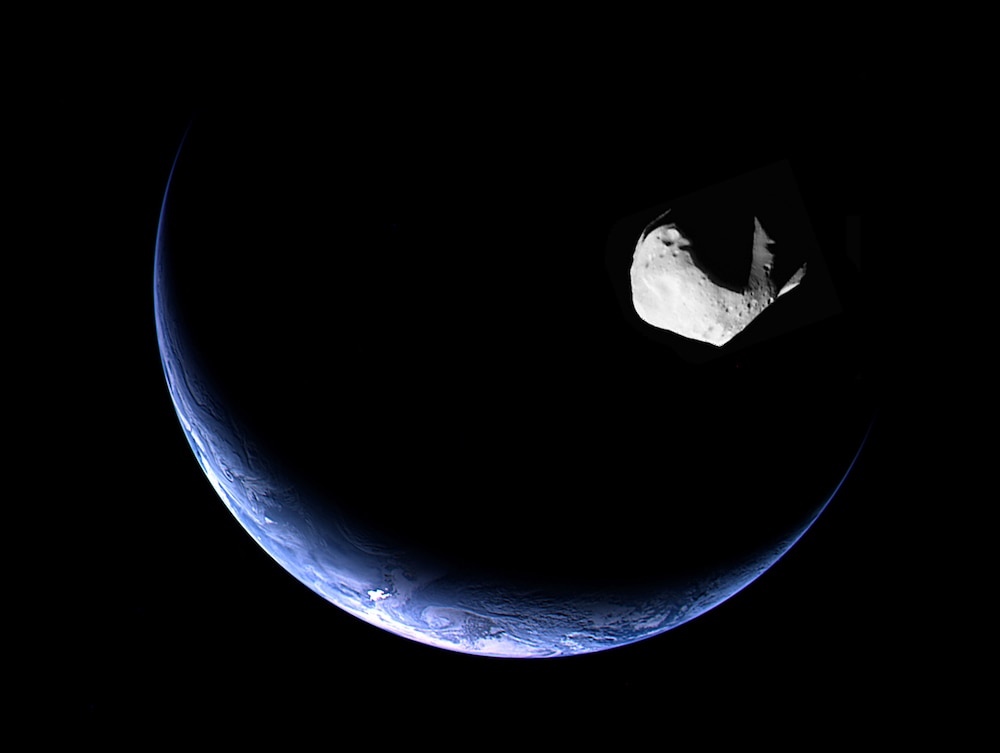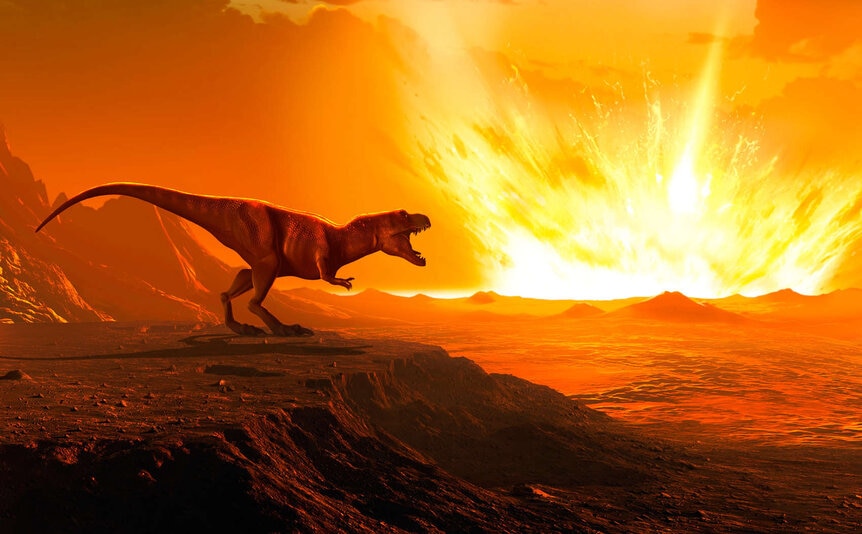Create a free profile to get unlimited access to exclusive videos, sweepstakes, and more!
The last spring of the dinosaurs
Scientists narrow down what time of year the dinosaurs died.

Sixty-six million years ago, the dinosaurs had a really bad day.
Not just them, either, since 75% of the species on Earth disappeared in a short time. There’s no doubt now that the main driver of this mass murder, called the K-Pg extinction event, was an enormous asteroid (or possibly comet) impact, an object 10 kilometers across that slammed into the planet just off the coast of modern-day Yucatan. This created a crater some 150 kilometers wide, and instigated a series of catastrophic events both immediate and long-term that wiped out most of the life on Earth.
We don’t know what the exact date of this event was, but scientists are honing in on the time of year it was, the season. And it’s looking like life on Earth had a really, really bad June.
Knowing the time of year of the impact is important because of the effect on biology. For example, a species might be more likely to survive if the event happened after they lay their eggs in a protected place. Even if the adults are wiped out a second generation could still have a chance. It also effects how long it might take for plants to regain their place in the environmental niches opened by the impact, or what specific species might dominate in the short term after the impact.
There has been previous work done that points toward the impact happening in late spring/early summer, but there hasn’t been a consensus. However, a new paper just published has some pretty good evidence that it was this time of year when the hammer fell.
In the new research, scientists turned to the Tanis fossil site in western North Dakota, a part of the vast Hell Creek Formation, a geological layer that spans several states and is dated to have been laid down at the time of the impact. Some 10 – 13 minutes after the impact in Mexico, immense seismic waves passed the Tanis site, causing flooding that most likely came from the nearby Western Interior Seaway, a huge but shallow sea that ran north/south across western North America at the time. This in turn created what’s called a seiche, a huge standing wave in water that can generate waves a hundred meters high. This is similar, for a much smaller and mundane scale, to when you scooch back and forth in a bathtub in time with the waves generated, amplifying the crests enough that you can splash water out of the tub.
Now picture the tub being a lake, and the waves reaching 20 stories high.
This happened quite suddenly at Tanis, and the geography of the area makes it possible to actually get extremely fine time resolution of the events. It’s also replete with fossils, including fish, insects, plants, and more. Here’s where this gets cool: By examining these fossils, it’s possible to figure out the time of year of the impact.
For example, the scientists looked at sturgeon fossils, specifically a pectoral fin spike. Sturgeon are anadromous, which means they migrate from river to sea and back again, so they go from fresh to salty water, and this migration is seasonal. Bone growth in sturgeon depends on time of year, health, and so on, and they can see that the growth of this spike bone stopped suddenly at the tip, certainly due to the fish’s death by the impact.
But the key here is in the elemental content of the bone. An isotope of oxygen called oxygen-18 fluctuates in a yearly pattern in the bones corresponding to migration; when the fish is in fresh water there’s not as much oxygen-18, and when they’re in salty seawater it is incorporated more strongly. The opposite is true for an isotope of carbon called carbon-13; its absorption in the bone is heavier in fresh water and lighter in seawater.
The scientists saw these abundances going up and down in the fish bone as they traced them toward the tip, and they’re out of phase (when one goes up the other goes down, and vice-versa), a clear indication of the seasons. Plotting these fluctuations, the scientists found the impact happened in late spring or early summer.
They found the same thing in mayflies. These insects burrow into wood to lay eggs, which hatch during a very brief interval of less than a few weeks in early spring. The fact that adult mayflies were found fossilized shows that the impact happened while adult mayflies were active, so after the eggs hatched. The bodies are also fragile, so the impact must have happened early in their adulthood, or else intact fossils wouldn’t have been found.
On top of that, some insect larvae eat leaves, leaving characteristic tracks in the leaves (this is called leaf-mining, an adorable term). Intact furrows in some fossilized leaves — including some still attached to branches — show that larvae were actively feeding at the time of impact, again pointing toward spring/summer, when larvae are busy building mass for metamorphosis.
I find this all rather amazing. I remember when the asteroid impact hypothesis was very controversial, and now it’s not only accepted, but evidence has popped for it in unlikely events like a million-year-long volcanic eruption halfway around the planet due to the force of impact opening up underground magma pipes, allowing the eruption to increase (though the contribution of this to mass extinctions is still being argued over).
And now not only is it accepted, but scientists can narrow down what month it happened in.
Big asteroid impacts are exceptionally rare, and global mass extinctions from them even more so. Still, the more we know about such events the better. You never know what piece of evidence will lead to a discovery that helps us better prevent an impact, or understand what the consequences are if we don’t.



























